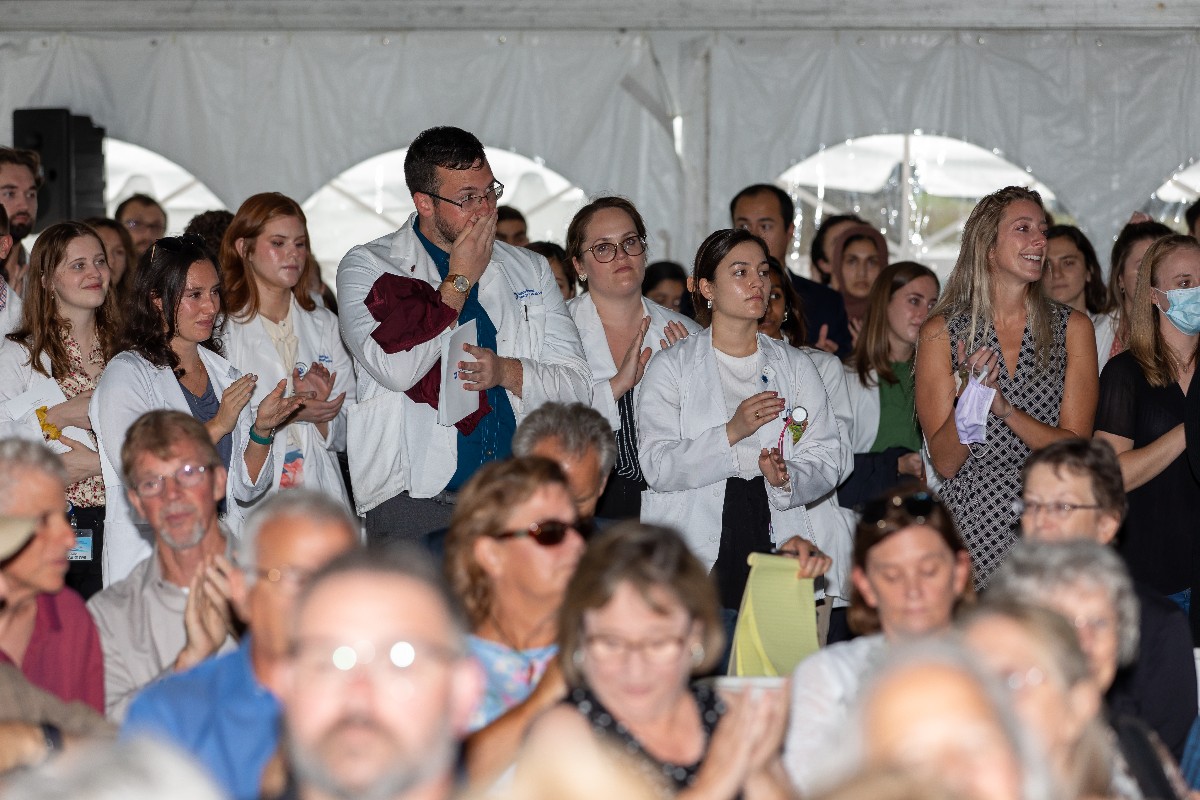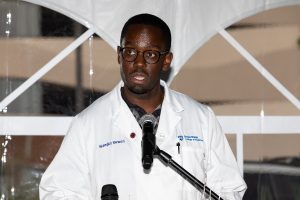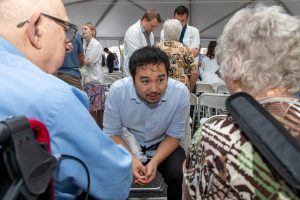Their gifts live on: Faculty, students, families remember those who donated bodies for medical education

Ethan Lee played Claude Debussy’s Clair de Lune, and the sweet phrases of music created for the crowd that rarest of moments on the bustling campus of Penn State College of Medicine and Penn State Health Milton S. Hershey Medical Center — stillness.
The music and the reflection were Lee’s gifts, meant to touch the ears, minds and hearts of listeners whose loved ones had given all of themselves to help students learn to save lives.
When he played the final note, the spell of solemnity broke. The audience – family members and friends of people who donated their bodies to College of Medicine anatomy classes — applauded Lee, a physician assistant student. The memorial was the College of Medicine’s first to recognize the donors since the start of the COVID-19 pandemic. More than 150 family members and friends gathered to remember 97 donors.
Lee was one of many College of Medicine students who offered songs and words on Sept. 19 to thank those who made the most remarkable gift — the donation of their remains to medical science.
“The human body is the foundation of medicine and is extremely complex — mastering the mysteries of the body requires dedication, effort and time by medical trainees,” said Evan Goldman, associate professor of radiology and director of the anatomy program. “Patients often express their gratitude to the medical practitioners who helped them through their illness or injury. People should be aware that the gratitude extends years back to the incredible teachers of the medical practitioners, not just the professors, but also the donors whose selfless gift made the medical education possible.”
The gratitude of the students was apparent. Dozens of Lee’s peers stood behind the seated family members so they too could reflect on the significance of the gift. For upwards of a year in some courses, students learn about the intricacies and complexities of the human body from people they’ve never met.
The anatomy memorial service helps students get to know more about the people behind the gift. It also gave some families a sense of closure. For many whose loved ones died early in the pandemic, the service was the only memorial service for their family.
The ceremony provided an opportunity for families to share memories of their loved ones, and for students to hear these stories and share their own experiences.
“I was especially moved by the stories that were shared by the families at the end of the ceremony,” said Zachary Aukers, a second-year medical student, who led the planning of the memorial. “I loved being able to learn a little bit about the donors and what made them special from their loved ones.”
According to Goldman, the interactions between students and families help the students get a sense of closure too. He said students regularly express to the faculty a strong desire to learn something that neither the donor nor the professors can teach: who is this person? Through direct conversations with families, students get to learn about the lives of the donors, while getting a chance to tell the families it was an honor to have learned from their loved one.
“It’s these connections that help our students appreciate the gift they’ve received and help families understand the impact of the gift their loved ones have given,” said Goldman.
Aukers, like many of his peers, offered gratitude to the donors they have never met, but learned so much from.
“Thank you for your selfless gift. Medical education would not be where it was today if it wasn’t for you. Your donation gives us the opportunity to become the best doctors we can possibly be.”
If you're having trouble accessing this content, or would like it in another format, please email Penn State Health Marketing & Communications.


